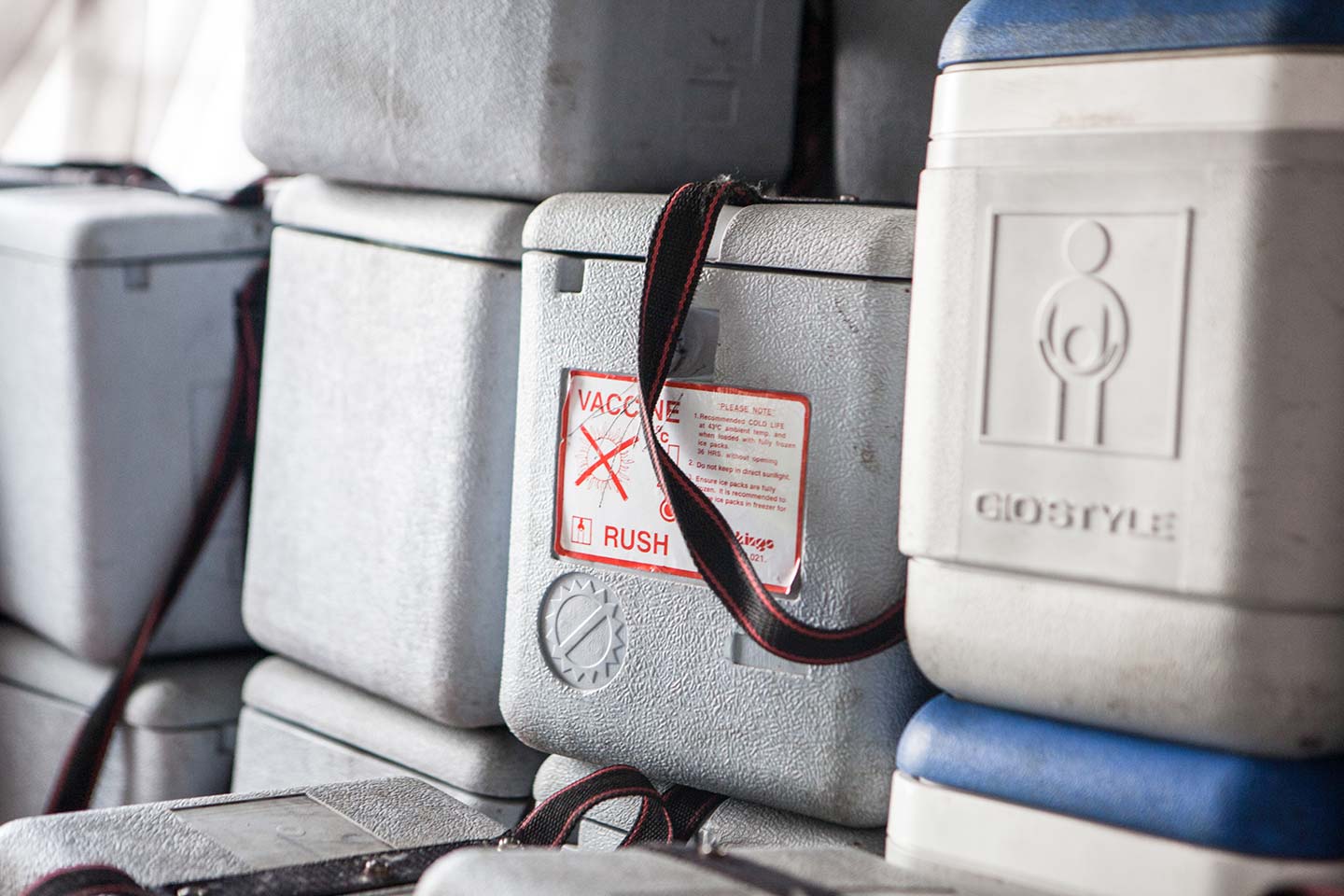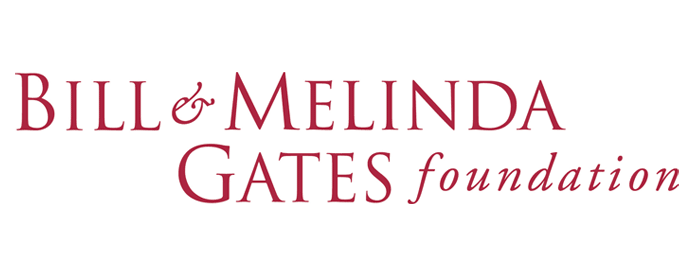A COVID-19 vaccine might be ready within 18 months. But what happens then?
The world is currently on pause, buying time while an effective vaccine against COVID-19 is developed. Already, several vaccines have entered human trials, and discussions have begun about how the most promising candidates might be manufactured.
- 28 April 2020
- 8 min read
- by The Bill & Melinda Gates Foundation

The world is currently on pause, buying time while an effective vaccine against COVID-19 is developed. Already, several vaccines have entered human trials, and discussions have begun about how the most promising candidates might be manufactured.
“We aren’t sure which vaccines will be the most effective yet, and each requires unique technology to make,” says Bill Gates, co-chair of the Bill & Melinda Gates Foundation. “That means nations need to invest in many different kinds of manufacturing facilities now, knowing that some will never be used. Otherwise, we’ll waste months after the lab develops an immunization, waiting for the right manufacturer to scale up.”
Assuming everything goes to plan,12 to 18 months from now, the first COVID-19 vaccines will start to roll out of one of those plants in bulk. What then?
Developing and manufacturing a vaccine against COVID-19 is only part of the solution. Without galvanizing the political will and developing the infrastructure to ensure that the vaccine is distributed equitably, to every person who needs it, in every corner of the globe, this disease will continue to stalk mankind for many years to come.
“This is a global pandemic, so it affects everybody. The best way for us all to be protected is to have an equitable approach to access—to ensure we’re doing what makes the most sense for the pandemic and for all of our protection, not just whoever can spend the most money,” says Brad Tytel, a senior program officer at the Gates Foundation, who is helping to coordinate its policy and advocacy response to the COVID-19 crisis.
The good news is that there are organizations with extensive expertise in vaccine delivery. UNICEF, for example, purchases vaccines to immunize almost half of the world’s children against preventable diseases, and Gavi, the Vaccine Alliance, makes sure those vaccines actually get to the kids in need. Since its founding in 2000, Gavi and its partners have vaccinated more than 760 million kids in 73 of the world’s poorest countries.
Building the supply chain…before the supply
Ensuring that the vaccines reach every country’s health system and distribution network safely and reliably is a considerable challenge. “It all comes down to supply chain,” says David Sarley, another senior program officer at the Gates Foundation, who works in the health systems team. Most vaccines are sensitive products; if they get too hot or too cold, they’ll lose their potency and no longer work as effectively. So, vaccines are transported from factory to clinic through a series of temperature-controlled steps, called the cold chain. They are often flown long distances in the holds of passenger planes, after which they must clear customs, and then be transported to refrigerated national storage facilities. From here, they are usually hauled overland by truck or motorcycle to regional facilities, before finally being transported to the clinic—sometimes even being walked the final leg on the back of a healthcare worker.
“That alone is a complex chain of custody and coordination, with many hands involved,” says Sarley. “Now you add in COVID-19, and each part of that supply chain is affected in one way or another.”
Since the world became aware of the novel coronavirus in January 2020, many countries have imposed travel restrictions to prevent infected people crossing their borders, with aircraft being grounded. Fewer flights mean vaccines must compete with other priority cargo, which can cause delays. Problematic as this is for essential supplies such as personal protective equipment (PPE), it’s even more of an issue for vaccines, because they must be kept refrigerated. So, already, at least 21 low- and middle-income countries are reporting shortages of vaccines for polio, measles, and human papillomavirus (HPV) due to border closures and disruptions to air travel.
Even if vaccines make it across borders, social distancing measures, redeployment of frontline workers, plus the possibility of large numbers of people falling sick could further disrupt the cold chain and reduce vaccine delivery to patients—including a future vaccine against COVID-19.
“My biggest worry right now is that routine immunization programs are getting delayed and stopped because of COVID-19,” says Seth Berkley, CEO of Gavi. “Of course, because of that we’re going to end up with outbreaks [of other diseases], which could doubly overwhelm health systems.”
Lessons should be learned from previous outbreaks, such as the 2014–16 Ebola epidemic in West Africa. Here, many countries tried to stem the outbreak by closing borders and banning flights to Liberia, Guinea, and Sierra Leone, which had the highest number of infections. One consequence was that humanitarian assistance was prevented from reaching some of the worst-affected regions, which further enabled the disease to spread.
Similarly, during the H5N1 bird flu crisis in 2006, disrupted flights combined with a surge in demand for PPE led to delays in this vital equipment reaching those who needed it. “Because the whole world was trying to get the PPE, and because we hadn’t set up pre-existing or forward contracts to guarantee [its transport], we had to pay premium rates to ensure space on aircraft,” says Sarley, who was involved in these coordination efforts.
Knowing that the COVID-19 vaccine will need to be delivered in 12 to 18 months means that plans can be put in place and preparations made. At one extreme, Sarley suggests, would be for organizations to purchase, now, a fleet of aircraft and have them on standby, with flight crews and logistics prepared so that they’re ready to fly. At the other, contracts with airlines could be set up to buy transport space in advance, wrapped in as many guarantees as possible.
Vulnerable health systems can also be reinforced in advance. For example, in early April, Gavi announced that it will provide $29 million in urgent initial funding to 13 lower-income countries. The money will support their responses to COVID-19, protecting healthcare workers with PPE, performing surveillance and training, and funding diagnostic tests.
At the same time, organizations like Gavi can also figure out how to adapt their operations to a disease no one has dealt with before. “With COVID, you likely have to prioritize a different type of population,” says Valerie Bemo, Deputy Director of Emergency Response at the Gates Foundation. Gavi and its partners, she points out, focus mostly on delivering vaccines to children, but children are the least affected by COVID-19. An immunization program for this disease will need to target people of all ages, particularly the elderly.
Developing equitable answers to hard questions
Developing a vaccine against COVID-19 and manufacturing billions of doses will be a massive achievement. “But no matter how fast the production is going,” Bemo points out, “we know there will still be limited quantity.”
In late 2021, a massive vaccine distribution program might be underway, and one of the most difficult questions the world have to answer is: “Who gets it first?”
“Ideally, there would be global agreement about who should get the vaccine first,” says Bill Gates, “but given how many competing interests there are, this is unlikely to happen. The governments that provide the funding, the countries where the trials are run, and the places where the pandemic is the worst will all make a case that they should get priority.
Berkley agrees that there will be difficult decisions ahead. “No matter how much we scale up, there will not be enough vaccine [to immunize everyone] on day one,” he says. Some prioritization will be necessary, but it’s not just about ensuring equity between rich and poor—there’s also the public health significance to consider: “If this disease is still killing health workers, the first priority might be to try and vaccinate every health worker in the world and not the general population as a priority,” Berkley suggests. “Even within countries, we need a consensus, because if it’s just ‘anybody can get it, at any time,’ what’s likely to happen is what always happens in these situations: It will be those who are worried and at lower risk who get access, rather than the people who are higher risk and not necessarily so worried.”
Achieving these feats will require global collaboration on an unprecedented scale. The World Health Organization has a role to play as coordinator, but individual countries will also need to put aside national interests and work together for the greater good. “We need a political and moral commitment from countries to do this, and we also need an operational and technical plan,” says Tytel. Without this, the world will spend a lot more than needed for an inadequate global supply of vaccine that will be allocated inefficiently. This will hurt everybody, he says.
Imagine a scenario where the disease is under control in some countries but raging through others: Here, it may be necessary to divert the bulk of available vaccine to these struggling countries—even though populations everywhere will be clamoring for it. If COVID-19 has taught us anything, it’s that if you have raging outbreaks in one area of the world, then ultimately, nowhere is safe, Berkley says: “There’s going to be pressure to say, ‘I’m only worried about me, my family, my community, my whatever.’ But with infectious diseases, you can’t think of it that way. We have to think locally but act globally.”
And there’s little time to lose: The countdown to an effective vaccine has begun, and it is progressing faster than for perhaps any pathogen in history. That’s good news, but it also means we need to start preparing for it now.







